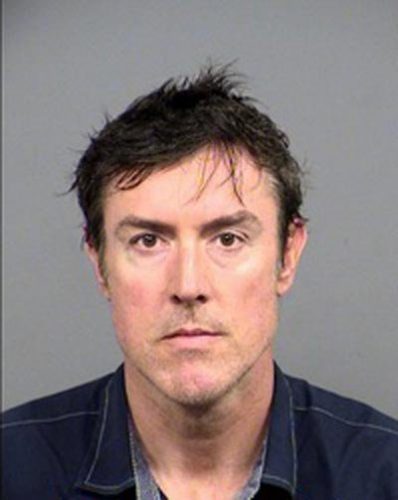
Thirty-five percent of female and 14 percent of male participants in a UO campus survey had at least one nonconsensual sexual experience during college, and 10 percent of female and 0.3 percent of male participants were raped.
UO professor Jennifer Freyd released these preliminary results of the “Sexual Violence and Institutional Behavior Campus Survey” at a meeting of the UO Faculty Senate Task Force to Address Sexual Violence and Survivor Support Sept. 30. Also released this week were public records showing that UO Athletics paid $4,000 in 2013 to Adam Ritz, a man convicted of the sexual battery of his babysitter, to give a talk to the football team about “alcohol and drug awareness and the consequences of poor decisions.”
According to Freyd’s campus survey of almost 1,000 students, which was funded by UO’s Center for the Study of Women in Society and private donations but not by the UO itself, “41 percent of students experienced institutional betrayal related to a nonconsensual sexual experience,” meaning the institution fostered an environment where the experience seemed common or was more likely, and it failed to prevent the experience or made it difficult to report.
Freyd is a nationally known scholar on institutional betrayal who has repeatedly offered the UO her expertise. UO Interim President Scott Coltrane did not attend Freyd’s presentation of the preliminary results to the task force but said in an email statement, “We look forward to working with professor Freyd and other universities across the country on an assessment tool that is being developed, and we hope to share the results of Dr. Freyd’s research with the other universities.”
In addition to paying a registered sex offender to come to campus, UO Athletics also paid $3,000 to the media relations firms 180 Communications to talk to student-athletes on how to brand themselves and about the pitfalls of Twitter. The records were obtained by professor Bill Harbaugh of the UO Matters blog.
UO professor Carole Stabile says she questions the wisdom of bringing in someone who was a media personality before he was convicted of sexual battery, who “has no experience teaching and now makes his living by speaking to athletes and fraternities about how this could happen to them, too.” She adds, “as if these things just ‘happened’ — he raped his babysitter.”
Stabile co-chairs the Senate Task Force, which has already given Coltrane several recommendations for preventing and dealing with sexual assault on campus. This unpaid, open-to-the-public task force is a separate entity from the Review Panel on Sexual Misconduct Prevention and Response appointed by former UO president Michael Gottfredson. Those panelists were offered honorariums of $10,000.
Cheyney Ryan, UO professor emeritus and longtime critic of the UO’s handling of sexual harassment and assault issues, points out that it appears people are not told ahead of time that Ritz is a sex offender. “I wonder if this is permissible?” Ryan asks.
Craig Pintens, UO’s senior associate athletic director of marketing and public relations, says via email that Ritz’s “personal experience is a critical component of his message,” but Pintens did not respond to questions of whether students were warned Ritz would be on campus or if any extra security measures were brought in to prevent him from raping or fondling anyone during his stay on campus.
Ritz was initially charged with rape, but the charge was reduced to sexual battery after the babysitter agreed to the lesser charge and to Ritz being registered as a sex offender, according to media reports at the time. Ritz was sentenced to six months in prison and to alcohol counseling.
Stabile says, “Ritz’s popularity on the athletics/Greek system speaker circuit at universities around the country suggests to me real problems around what these at-risk subcultures consider to be appropriate education around sexual assault and alcohol prevention.” She points out that “the fact that these programs are bringing in people like Ritz, and not scholars and teachers whose expertise is grounded in research and not their own criminal acts, suggests to me that they really don’t want to have any outside eyes on the problems that exist within the programs.”
Freyd and graduate student Carly Smith will speak to the City Club of Eugene on “Addressing Sexual Assault — From Institutional Betrayal to Institutional Courage,” noon Friday, Oct. 3, at the Downtown Athletic Club, 3rd floor ballroom.
Update
In an email to the Senate Task Force, Freyd points out the numbers go up if you include attempted rapes.
Dear Task Force Colleagues,
In the data presented on 30 September 2014, for events related to “rape” we used two items from the SES pertaining to penetration of the vagina or anus.
We reported on Tuesday that 10% of women in our sample were subjected to such experiences during college (up to this point in their studies).
However, many researchers aggregate the prevalence of both attempted and completed rape in their calculations. One reason this is likely is that neither campus safety or policy success can be based on whether a particular student is successful at resisting a rape attempt.
We have calculated the percentage of students who have been subjected to rape attempts and/or completed rapes during their time in college. In this new calculation we found that 19% of the women in our sample experienced rape (attempted/completed) during college up to this point in their studies.
The survey items for the new calculation and percentages by year and gender can be found in our October 2 update. That update is posted along with the complete survey instrument and the September 30 slides at:
http://dynamic.uoregon.edu/jjf/campus/index.html
Jennifer